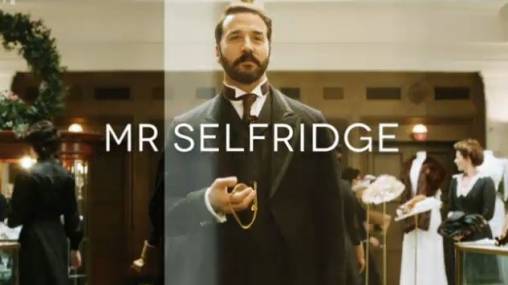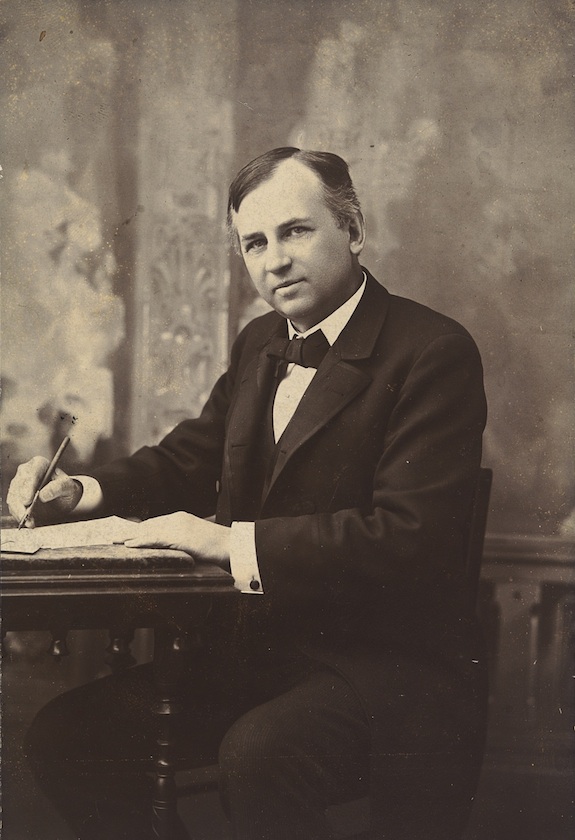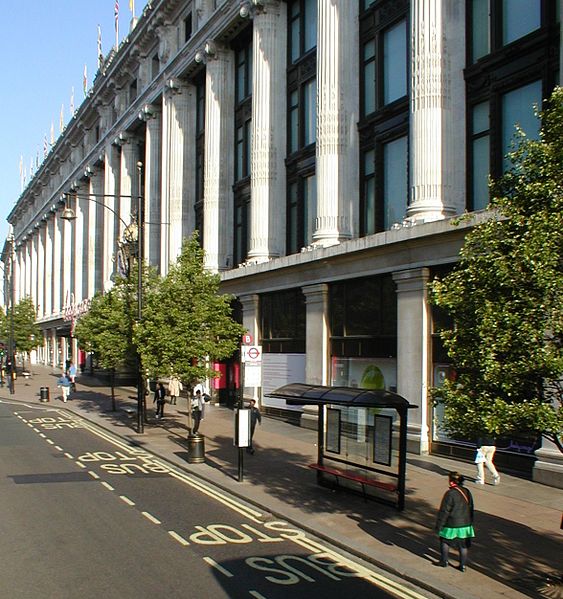Why the Department Store Brought Freedom for the Turn of the Century Woman
Harry Selfridge, a London department store owner, may have opened the doors to more than just his retail store when he gave women a chance to power shop
![]()

The new series “Mr. Selfridge” begins airing March 31 on PBS.

Historian Amy Henderson of the National Portrait Gallery covers the best of pop culture and recently wrote about the film Cabaret.
For Downton Abbey fans wondering how to spend their time until season four begins next year, PBS is offering a little something to dull the pain. Starting March 31st, we’ll be able to indulge our frothy fantasies with “Mr. Selfridge,” a new series replete with Edwardian finery, intricate plots and engaging actors.
Inspired by Lindy Woodhead’s 2007 biography, Shopping, Seduction & Mr. Selfridge, about department store magnate Harry Gordon Selfridge, the new Masterpiece Theater series starring Jeremy Piven in the title role, makes an important connection: “If you lived at Downton Abbey, you shopped at Selfridge’s.”
The American-born Selfridge (1856-1947) learned the retail trade in the years when dry goods outlets were being replaced by dazzling urban department stores. Wanamaker’s in Philadelphia, Marshall Field’s in Chicago and Gimbels in New York were vast “palaces of abundance” that treated shoppers like pampered pets. These stores made shopping entertaining, competing for attention with tea rooms, barber shops, fashion shows and theatrical presentations.

John Wanamaker helped pioneer the concept of the department store in Philadelphia. Courtesy of the National Portrait Gallery
In a twist of irony, shopping also provided a platform for women’s empowerment and for the rising emancipation movement. The modern “new woman” rode bicycles and worked in cities and appeared in public alone without fear of scandal. To women who embraced a modern public identity, department stores became a safe haven where they could convene without guardians or escorts. Shopping was a declaration of independence. And the fun was in the details. Fashion was always changing so there was plenty of reason to load up shopping bags and come back for more.
Setting the stage with as much hoopla as possible, the art of selling had became as much a “show” as any theatrical venture. Beautifully appointed, Field’s, Gimbels and Wanamker’s were glittering showplaces, bathed in the glow of newly invented high-wattage electric lighting. And shopper’s found paradise enjoying the displays of exciting new goods in the large plate glass windows. John Wanamaker, whose Philadelphia department store reflected the newest techniques in salesmanship—smart advertising and beautifully displayed merchandise—even exhibited Titians and Manets from his personal art collection.
Harry Selfridge got his start as a stock boy at Marshall Field’s landmark Chicago store. For 25 years, he climbed rung-by-rung the proverbial corporate ladder until he became Field’s partner, amassing a considerable personal fortune along the way. But it wasn’t enough to quench an insatiable ambition and on a trip to London in 1906, he had a “Eureka” moment. Noting that London stores lacked the latest selling techniques popular in America, Selfridge took his leave from Field’s, and opened a London emporium. Always a dreamer, but quite practical as well, he chose a site ideally situated to attract thousands of people, traveling the Central Line—the London Underground that had opened just six years earlier and would become a boon to West End retailers.
Opening for business on March 15, 1909, the store became a commercial phenomenon, attracting a million people during its first week. A London columnist reported that it was second only to Big Ben as a tourist favorite. The store was a marvel of its day—five stories high with three basement levels, a roof-top terrace and more than 100 departments and visitor services, including a tea room, a barber shop, a hair salon, a library, a post office, sumptuous ladies’ and gentlemen’s cloakrooms, a rifle range, a nursing station and a concierge who could book West End show tickets or a passage to New York. The store’s massive six acres of floor space was gorgeously designed with wide open-plan vistas; brilliant lighting and trademark green carpeting throughout. Modern Otis “lifts” whisked customers quickly from floor-to-floor. “A store, which is used every day,” Selfridge said, “should be as fine a thing and, in its own way, as ennobling a thing as a church or a museum.”

Alice Paul of the National American Woman Suffrage Association. Courtesy of the National Portrait Gallery

Sending a clear message at the 1913 march in Washington, D.C. Courtesy of the American History Museum
The opening coincided with the burgeoning suffrage movement. The same year, Alice Paul—a young American Quaker who moved to London to work on the British suffrage movement—made headlines when she disrupted the Prime Minister’s speech by throwing her shoes and yelling, “Votes for women!” Politically awakened, women felt newly empowered in the marketplace and at the department store in particular where they could shop independently, without a chaperone and without fear of causing scandal for doing so. Selfridge himself understood this, once explaining “I came along just at the time when women wanted to step out on their own. They came to the store and realized some of their dreams.”
The act of shopping may have opened doors for turn-of-the-century women, but the dream of suffrage would require organized political engagement for ensuing generations. On her return to the United States, Paul became a leader in the National American Woman Suffrage Association. In March 1913, she organized a massive parade in Washington to demand a Constitutional amendment giving women the right to vote. The 19th Amendment was ratified seven years later on August 18, 1920; in 1923 Alice Paul drafted an Equal Rights Amendment that would guarantee women’s equality. Congress passed the ERA half a century later in 1972, but of course not enough states have yet voted for its ratification.
Meanwhile, the enticing real-life story of Mr. Selfridge and his department store will take us back to a time when women wore corsets and ankle-length dresses, and couldn’t vote. But they could shop. And perhaps unwittingly, Harry Selfridge furthered their ambitions when he said: “the customer is always right.”
/https://tf-cmsv2-smithsonianmag-media.s3.amazonaws.com/accounts/headshot/Amy_Henderson_NPG1401.jpg)

/https://tf-cmsv2-smithsonianmag-media.s3.amazonaws.com/accounts/headshot/Amy_Henderson_NPG1401.jpg)